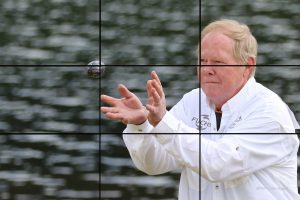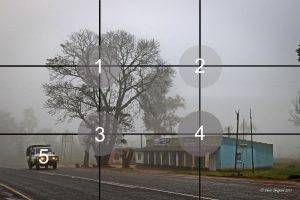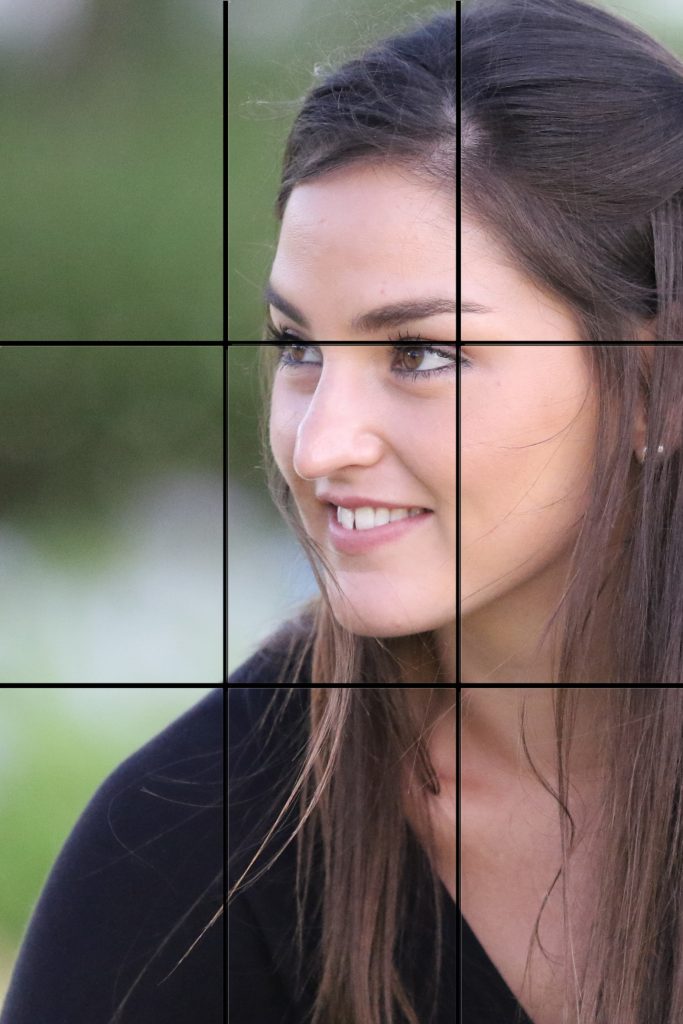By Chris Sheppard, Mashonaland Photographic Society
How often do you see a scene that is crying out for a photograph? Your next thought is that you only have your cellphone, and I wish I had a better camera! I am sure we have all been there, so in this article I will try to give you a little guidance on improving your scenic image – even if it taken with a cellphone.
The “Rule of Thirds” is a common guide for photographers. You simply divide up your scene into 9 equal segments where they meet is the “third” that the rule refers to.
See the image of the misty roadside scene, and the numbers 1, 2, 3 and 4 show you exactly where these areas are. By keeping your point of interest on one of these points you can greatly improvethe impact of your image.
I have used this picture of a Rural Store as an example. I like to think that it is a well-balanced photograph. The tree on the left anchors the image and you will notice that it sits almost exactly on the left third. The bottom third is roughly where the horizon would be if it was visible through the mist and includes the top of the Store (Points 3 and 4). Point 2 is the misty space that addsmood even though there is nothing discernible there.
An important note here is that there is nothing that really catches  your eye in the middle of the image. We often see something really nice, lift up the camera/cellphone, focus on what we are looking at, keeping it dead centre and snap away. Yes, we catch the image, but it would look better if that point of interest was rather off-centre giving the viewer’s eyes a chance to explore the whole scene to better feel what you have tried to shoot.
your eye in the middle of the image. We often see something really nice, lift up the camera/cellphone, focus on what we are looking at, keeping it dead centre and snap away. Yes, we catch the image, but it would look better if that point of interest was rather off-centre giving the viewer’s eyes a chance to explore the whole scene to better feel what you have tried to shoot.
What you can do is to focus on what you are looking at, then recompose by moving the camera to change the scene. This is easily done with a cellphone by tapping on the screen where you want the focus. This particular image is made more interesting by the blurred Land Cruiser (number 5) entering the frame from the left with lights on. Sometimes it is worth waiting by such a scene and including other subjects which can increase the impact.
The rule of thirds does not only apply to landscape photography. Look at many images and you will see it repeated, even in portraits, often the eye of the subject is placed on the intersection of thirds giving an automatic balance.
Train your eye to look for this simple rule to improve your composition.

